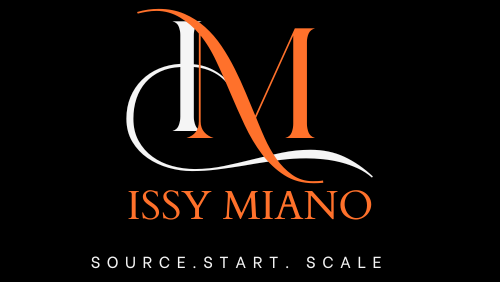💰 Pricing & Profit by Category: Clothing, Beauty & Kitchenware Explained
If you’ve ever asked yourself, “Am I pricing my products right?” — you’re already ahead of most small retailers.
Whether you sell clothes, beauty products, or home goods, getting your pricing strategy right determines whether your business grows or struggles.
I’ve seen amazing boutiques close down — not because their products weren’t great — but because their pricing didn’t make sense.
This article breaks down how to price your products and measure profit by category so you can protect your margins and scale confidently.
🎁 Grab your free Break-Even Calculator to run your numbers as you read.
💡 The Pricing Formula That Works for Every Product
Let’s start with the simple rule I teach all my sourcing clients:
Retail Price = (Landed Cost × Markup) + Overheads
Where:
Landed Cost = Product + Shipping + Import Duty + Packaging
Markup = How much you multiply cost to reach your selling price
Overheads = Marketing, rent, salaries, or transaction fees
Aim for a minimum gross margin of 55–70% to keep your business sustainable.
💬 Issy’s Tip: Never copy another store’s prices blindly — their costs, shipping, and taxes may differ from yours.
👗 1️⃣ Clothing & Boutique Businesses
Typical Markup: 2.5× – 3×
| Product Type | Avg. Wholesale Price | Suggested Retail | Profit Margin |
|---|---|---|---|
| Women’s dress | $18 | $45–55 | 60–67% |
| Plus-size set | $22 | $50–60 | 55–60% |
| Denim jeans | $25 | $65–80 | 60–68% |
| Basic tops | $8 | $20–25 | 60–70% |
🧵 Why clothing has higher markups:
Frequent restocks and seasonal rotations mean you must cover slower months.
Returns and size exchanges reduce net profit if you don’t build them into pricing.
✅ Tools to use:
Clothing Starter Kit – pricing sheet + margin tracker
Clothing Wholesalers List – to compare costs and adjust markups per vendor
💬 Pro Tip: Include packaging and model photography in your cost per unit — they’re part of your marketing expense.
💄 2️⃣ Beauty & Cosmetics Businesses
Typical Markup: 2× – 4×
| Product Type | Avg. Wholesale Price | Suggested Retail | Profit Margin |
|---|---|---|---|
| Lip gloss | $3.00 | $12–15 | 75% |
| Serum | $5.50 | $25–40 | 70–80% |
| Hair extensions (bundle) | $40 | $120–150 | 65% |
| Skincare set | $15 | $45 | 66% |
💅 Why beauty margins vary:
Products have longer shelf life → fewer write-offs.
Branding & packaging dramatically increase perceived value.
Private label options let you own higher markups (3–5×).
✅ Tools to use:
Beauty Starter Kit – formula cost sheet
Cosmetics Suppliers List – verified vendors for private label and reselling
💬 Issy’s Tip: Bundle low-cost items (e.g., lip gloss + liner + bag) into sets. Bundles raise average order value without much extra cost.
🍽️ 3️⃣ Kitchenware & Home Décor Businesses
Typical Markup: 2× – 2.8×
| Product Type | Avg. Wholesale Price | Suggested Retail | Profit Margin |
|---|---|---|---|
| Dinnerware set | $18 | $45–60 | 60–65% |
| Ceramic vase | $12 | $30–40 | 60% |
| Kitchen tool set | $10 | $25 | 60% |
| Storage jar | $4 | $12–15 | 65% |
🏡 Why margins are slightly lower:
Higher shipping and packaging costs for fragile goods.
Breakage risk → must include a damage buffer in pricing.
Larger or heavier items cost more to store and ship.
✅ Tools to use:
Kitchenware & Décor Starter Kit – cost tracker + sourcing checklist
List of Kitchenware & Décor Suppliers – 100+ export-friendly wholesalers
💬 Pro Tip: Offset thinner margins with value-added bundles — for example, “Tea Time Gift Set” (cup + saucer + spoon + box).
📊 How to Calculate Your Break-Even Point
Use this formula to find how many units you must sell to cover costs:
Break-Even Units = Total Monthly Costs ÷ (Selling Price – Cost per Item)
Example:
If your boutique spends $1,000/month, your dress costs $20, and you sell it for $50:
$1,000 ÷ ($50 – $20) = 33.3 units per month to break even.
🎯 Goal: Once you know your break-even point, you can plan smarter marketing budgets and reorder cycles.
👉 Try the interactive Break-Even Calculator on IssyMiano.com to automate this math.
🧮 Category Comparison at a Glance
| Category | Typical Markup | Average Margin | Inventory Risk | Restock Frequency |
|---|---|---|---|---|
| Clothing | 2.5–3× | 55–70% | High (seasonal) | Monthly |
| Beauty | 2–4× | 60–80% | Low (long shelf life) | Quarterly |
| Kitchenware/Décor | 2–2.8× | 55–65% | Medium (fragile) | Bi-monthly |
💬 Issy’s Note:
Diversify across categories if you run multi-niche stores. Beauty builds steady cash flow, décor builds high ticket value, and clothing drives volume.
🧠 Common Pricing Mistakes
❌ Forgetting to include packaging & delivery costs.
❌ Discounting too often — customers get used to low prices.
❌ Pricing emotionally (“I’d pay $20 for this”) instead of by formula.
❌ Ignoring taxes and transaction fees when calculating margin.
❌ Not adjusting markup for imported vs. local goods.
✅ Always review your pricing quarterly — supplier costs and shipping fluctuate regularly.
🪞 My Personal Rule: The 3-P Pricing Check
Before listing any product, ask:
Profit: Does this meet my target margin after shipping?
Perception: Does the price match the perceived quality?
Positioning: Is it priced competitively within my niche?
If you can tick all three, you’re good to go.
🔗 Related Resources on IssyMiano.com
❓ FAQs
1. What’s a healthy profit margin for small product-based businesses?
Aim for 55–70% gross profit to cover overheads and reinvestment.
2. How often should I adjust my prices?
Quarterly. Review supplier costs, freight rates, and competitor pricing.
3. Should I use the same markup for all products?
No — adjust by category, size, and sales velocity. High-volume products can have slightly lower margins.
4. How do I price products sold internationally?
Include currency conversion fees, customs duties, and higher shipping costs.
5. Is it better to offer discounts or bundles?
Bundles retain perceived value. Use discounts strategically for end-of-season clearance only.
✨ Conclusion
Pricing isn’t guesswork — it’s strategy.
When you know your true costs, set realistic margins, and use the right tools, you build a business that lasts.
Start by downloading your Break-Even Calculator and the Starter Kits for your category (Clothing, Beauty, or Kitchenware).
Then, benchmark your prices using the verified suppliers in your hub’s Wholesaler Lists — so every product you sell adds to your bottom line, not eats into it.
Because confidence in pricing = confidence in growth. 💪


